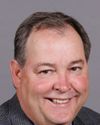Thank you, Madam Chair.
I am going to do exactly what I did a little earlier for the witnesses we heard before you. Like Mr. Simard, I am wondering whether there is any hope. Would you say that your comments—I won't say your vision—apply to all of Canada? I'm asking that question because I want to talk about a region I feel particularly strongly about—my own, which is the Lower St. Lawrence and Gaspé region.
The Institut Maurice-Lamontagne is in the riding of one of my colleagues, in Sainte-Flavie. They carry out ocean research there. As you know, we're talking about Rimouski. It has connections to all the learning institutions as regards ocean sciences, including the University of Quebec in Rimouski, the Quebec Maritime Institute, the Rimouski Ocean Sciences Institute, research centres, and so on. I could name you several more.
I am talking about young people and some who are less young, of both female and male researchers. I see people who are very happy to work for the federal public service. Not only are they happy with their job, but they are also happy to be living in a wonderful region and to enjoy good quality of life living close to an estuary, their family, and so on, being able to go hiking, engage in recreational activities, go kayaking and do things that they may not necessarily find elsewhere. Is that what you are also hearing? Like your union colleagues that came before you, you talked about practical issues such as salaries, structures and resources. Of course, all of that is part of it. Someone would not agree to work for a pittance, but at the same time, there are other things in life. There is the future and everything that entails. Do you consider that? You talk in very rational terms—only about working conditions, salaries and retirement, because people have to work 30 or 40 years. Those are obviously factors. But there are other ones as well. Is the situation the same all across Canada or do you consider the fact that, in some regions, there are quite considerable differences?



